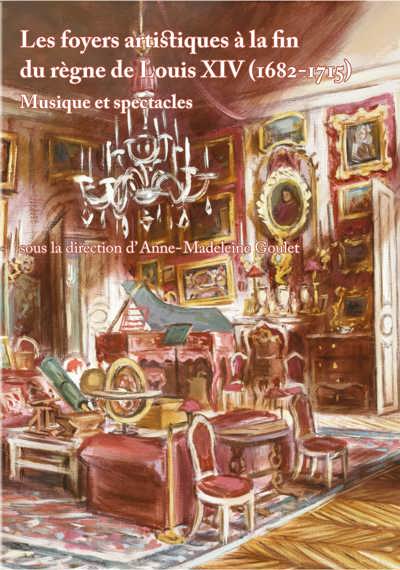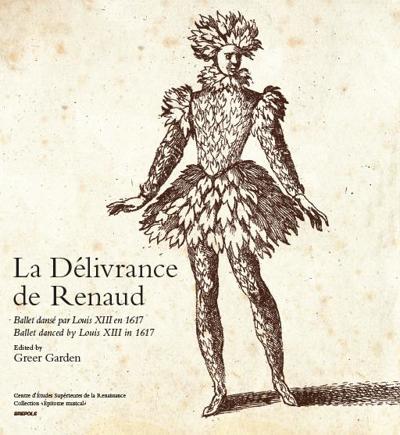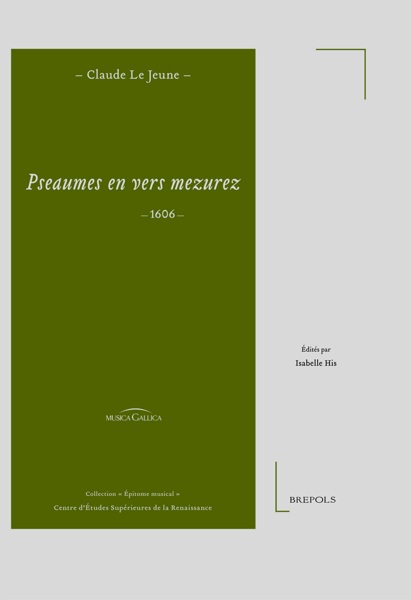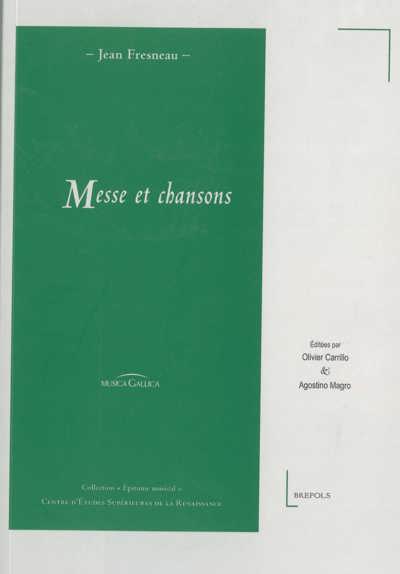
La Délivrance de Renaud. Ballet dansé par Louis XIII en 1617. Ballet danced by Louis XIII in 1617.
Greer Garden (ed)
- Pages: 293 p.
- Size:190 x 290 mm
- Illustrations:17 b/w, 68 col.
- Language(s):French, English
- Publication Year:2011
- € 75,00 EXCL. VAT RETAIL PRICE
- ISBN: 978-2-503-52347-7
- Hardback
- Available
"Certainly the book contains a wealth of information for the specialist interested in this period, (...); but Greer and the other authors have also accomplished that rare feat of catering simulteously to the more general reader (...). (...) Please join me now in congratulating Greer Garden, as well as Peter Walls and her other collaborators, in making such an important contribution to our understanding of this repertoire, in sharing with us this literally enchanting material, and in bringing us La Déliverance de Renaud." (Inge van Rij, review presented at the book launch on the 23rd of May 2011, http://www.royalsociety.org.nz/2011/12/20/launch-of-la-deliverance-de-renaud/)
"Of the small number of facsimiles currently available in print, Brepols's Discours au vray sets a new standard for image quality, layout, and rigor, providing a significant resource to scholarship on baroque music and dance." (Virginia K. Preston, in: Dance Research Journal, 44/2, Winter 2012, p. 96-100)
The story of Rinaldo and Armida, where love conflicts with duty, magic plays a role, and morality wins the day, lends itself to being dramatised, and a number of librettists adapted it for the stage in the 17th and 18th centuries. In France, where the ballet de cour was the prime dramatic entertainment, the earliest adaptation of Tasso for the theatre was the Ballet du Roy danced by Louis XIII and his courtiers in the Salle du Louvre on Sunday, 29 Janary 1617. The fifteen-year-old King chose the subject from several proposed to him by Etienne Durand, the designer placed in charge of the occasion. La Délivrance de Renaud.
The present publication is dedicated entirely to the study of a single ballet de cour. Its centrepiece is a modern edition of the complete livret, compiled by Etienne Durand, his Discours au vray du ballet dansé par le Roy, le dimanche XXIXe jour de janvier 1617, avec les desseins, tant des machines et apparences différentes, que de tous les habits des Masques (Paris, Ballard, 1617)
In the first group of articles we look at the kind of historical evidence provided by the main sources for the ballet de cour, the Vers and the livret, and the noble participants are introduced ; the second group deals with the sources of inspiration for the ballet; in the third group, we consider the music of our ballet; the fourth group deals with the scenography and other visual aspects of the performance; at the end, the last group of articles is dedicated to the dance.
L’histoire de Renaud et d’Armide, celle du conflit de l’amour et du devoir, où la magie joue un rôle, et où la moralité prime enfin, se prête à la représentation scénique, et fut, pour les librettistes des XVIIe et XVIIIe siècles, un sujet de choix. La première adaptation en France pour la scène de l’épisode célèbre du Tasse fut le Ballet du Roy dansé par Louis XIII et ses courtisans dans la Salle du Louvre le dimanche 29 janvier 1617. Le roi, alors âgé de quinze ans, en choisit le sujet parmi plusieurs que Etienne Durand, le concepteur désigné pour ce projet, lui proposa. La Délivrance de Renaud.
La présente étude est consacrée entièrement à un seul ballet de cour. Sa pièce centrale est la reproduction du facsimile du livret conçu par Etienne Durand, son Discours au vray du ballet dansé par le Roy, le dimanche XXIXe jour de janvier 1617, avec les desseins, tant des machines et apparences différentes, que de tous les habits des Masques (Paris, Ballard, 1617).
Dans le premier groupe d’articles, nous observons les témoignages historiques fournis par les sources principales du ballet de cour, les Vers et le livret, et nous présentons les participants de la noblesse ; le deuxième groupe d’articles traite des sources d’inspiration ; le troisième groupe d’articles concerne la musique ; le quatrième groupe a trait à la scénographie et aux autres aspects visuels de la représentation et enfin, les trois derniers articles traitent de la danse.




